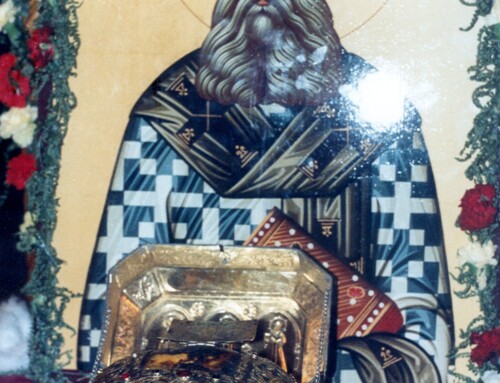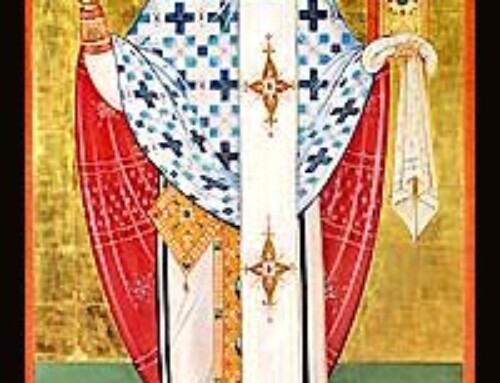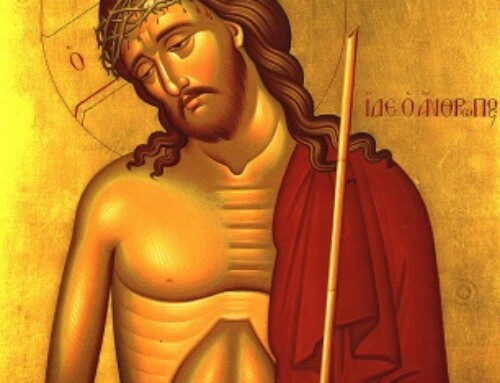Presentation by Fr. John Mangels
Midwest Region Clergy Seminar
Terre Haute, Indiana
AN EXPERIENTIAL OUTLINE OF
THE SUBSTANCE OF CATECHESIS
DOGMATIC THEOLOGY, THE BIBLE AND THE COUNCILS OF THE CHURCH
All three of these aspects of related to the manifestation of the Truth of God. While they are related, they are experienced differently and require different disciplines to appropriate them, and so they bear slightly different fruit.
Primary Energy Revealed:
Truth
Necessary Humility to Approach These Aspects of Holy Tradition:
– Humility of the intelligent aspect of our soul Humility of the intelligent aspect of our soul
Observations:
– Dogmatic theology is commonly linked in popular thought with philosophy and logic. While the disciplines of both may have their formative role for dogmatic theology, neither are germaine to it. Dogmatic theology is not religious philosophy or necessarily a logical religious system. Dogmatics are dearly reasoned statements about the revelation of God.
– The Bible reveals the truth of God in terms of his covenants with his chosen people. This is not narrowly to be understood as meaning only ‘historical’ revelation, but also cultural and poetic revelation for example as shown in the Wisdom literature of the Old Testament. The Bible shows the mighty acts of God in what some scholars beautifully call, “God’s search for man.”
– The Councils reveal the truth in terms of the living continuity of the Church, revealing the boundaries of our faith. They are also manifestation of the Incarnation of Christ in a particular, chosen people as his Body. It is this organic unity of Christ with his Church, and the expression of his Word to the Church through the Councils that makes them so profoundly important to us.
Fruit:
– Dogmatic theology sanctifies discursive reasoning, freeing it from slavery to the created mind and passions. Real dogmatic theology brings humility to the mind since it forces the mind to recognize its created limits.
– If the Scriptures are approached with humility our relationship with Christ and the rest of creation is established in the truth and we understand what things are for. In short, the Bible gives birth to faith and wisdom by presenting us with truth.
– The Councils bear what we might call ‘a negative fruit.’ They uproot heresies and pride that keep the truth from being planted in our hearts. They set the safe boundaries of our lives so we might be able to grow in the Faith. Understanding the ‘negative’ or ‘corrective’ nature of the fruit the Councils bear, we can all the more dearly see why those who treat the Council as fundamentalists do great damage to souls.
ASCETICISM
Primary Energy:
Purity
Necessary Humility to Approach This Aspect of Holy Tradition:
– Appetive and incensive aspects of our soul
Observations:
– Asceticism is varied. Most commonly thought of in its traditional forms of fasting, vigils and almsgiving, for the catechumen (and for the neophyte) asceticism very often includes a basic re-ordering of daily life, for example in making time for prayer; changing one’s weekend habits; checking the church’s calendar before making personal plans; beginning to learn abstinence in food and possessions. All of these things mark the beginning of asceticism and need to be understood as such.
– The traditional forms of fasting, et al. must be tempered by personality, gifts, strength, and station in life. The goal of purification of the appetites must be kept clearly in mind when counseling a parishioner on asceticism. Remember everything must be personal, hence the need for spiritual fathers (and mothers).
– Though in the very earliest stages of asceticism we might speak of it being character training, it is not its primary purpose.
Fruit:
Purification of the bodily appetites
PRAYER, WORSHIP & THE HOLY MYSTERIES
Primary Energy:
– Faith, secondary energy is Truth (this is so because the faith, or relationship is with Truth himself)
Necessary Humility to Approach This Aspect of Holy Tradition:
– Humility of relationships (i.e., setting one’s relationship with God the Holy Trinity, as the primary relationship of one’s life)
Observations:
– Faith is a relationship. This relationship is something given to us as a gift from God. The prayer and worship of the Church strengthens and builds upon this free gift.
– A genuine relationship is completely honest and is not built upon illusions. So in the worship of the Church Truth is also proclaimed and revealed, so the relationship is genuine.
– As for the substance of catechesis, the Liturgy is not part of it. It is abundantly clear that although the Liturgy and our liturgical texts are part of Holy Tradition, they are not part of classical catechesis. After all, the Liturgy says, “Catechumens depart.” Perhaps the Divine Hours of the Church may be said to be part of the classical catechesis and it is there after all that we will find the most profound and didactic of our liturgical/theological texts anyway.
Fruit
– The fruit of worship, prayer and the Holy Mysteries is union with God—which is what these three are by definition. Perhaps the only ‘fruit’ one might suggest these have is a deepening of that relationship and union.
ART & ARCHITECTURE
Primary Energy:
Beauty
Necessary Humility to Approach This Aspect of Holy Tradition:
– The imagination
Observations:
– The art and architecture of the Church can never be pedestrian or simply ‘pragmatic.’ (This is true of liturgy and liturgical language as well.)
The Church’s architecture is a received tradition and is not merely an art form.
– The iconography of the Church is not merely a product of purified souls, or the ascetic life of the Church, they are manifestations of God, and his holiness as lived by the Saints, in the palette of color.
Fruit:
– purified images
– spatial sanctification of the world
– an experiential space of Mystery
CANONS OF THE CHURCH
Primary Energy:
– It may seem that Justice is the primary energy, but in fact it is wisdom. re: the Wisdom of Solomon.
Necessary Humility to Approach This Aspect of Holy Tradition:
– Judgment
Observations:
– The Canons of the Church are personal and pastoral applications of the revelation of God for the salvation and healing of the person. Because the application is focused on persons within the context of the life of the Church, it is always something that varies. This means that the adjustments are not for ‘contemporary needs’ or ‘modern times’, but are in reality for the frailties of ‘this modern man and woman.’ We should not become accustomed to thinking that we are trying to be relevant to the times and the society. Frankly, the Church doesn’t care about either except in so far as they effect the faithful.
Fruit
– Like the Councils from which the Canons spring (or from the Fathers from which they spring), the Canons serve as preparatory or corrective fruit
Works Cited & Further Reading
Cavarnos, Constantine. Byzantine Thought and Art: A Collection of Essays. Belmont, Mass.:
Institute for Byzantine and Modern Greek Studies, 1974.
Ouspensky, Leonid. Theology of the Icon: Volume I & II. Translated by Anthony Gythiel. Crestwood, NY: St Vladimir’s Seminary Press, 1992.
Saint Isaac the Syrian. The Ascetical Homilies. Translated by the Holy Transfiguration Monastery. Boston, Mass.: Holy Transfiguration Monastery, 1984.
Saint John Cassian The Institutes. Translation and Annotations Boniface Ramsey, O.P. New York, N.Y./Mahwah, NJ.: The Newman Press, 2000.
Saint John Climacus. The Ladder of Divine Ascent. Rev. ed. Trans. Archimandrite Lazarus Moore. Brookline, Mass.: Holy Transfiguration Monastery, 1991.
Vlachos, Metropolitan Hierotheos. The person in the Orthodox Tradition. Translated by Esther Williams. Levadia-Hellas, Greece: Birth of the Theotokos Monastery, 1998.
Zizioulas, John D. Being as Communion: Studies in Personhood and the Church. With a Forward by John Meyendorff. Crestwood, NY: St Vladimir’s Seminary Press, 1997.





